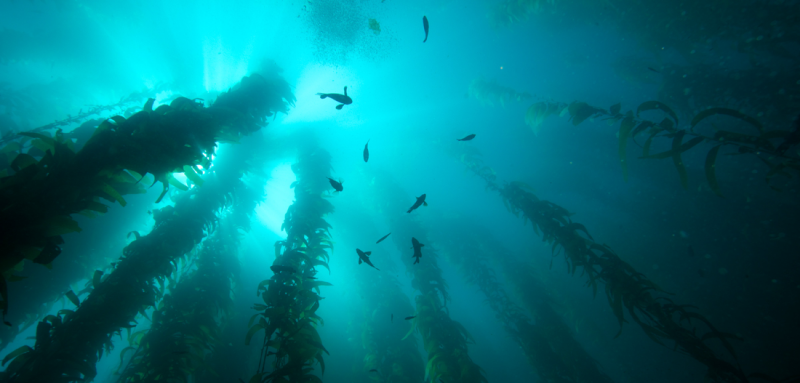Helping Kelp: Scientists and Volunteers Team Up to Track Changes to Ocean Forests

Off the coasts of almost every continent lay vast underwater forests of giant floating kelp, which provide habitats that support marine biodiversity and productive fisheries. Kelp forests are extremely sensitive to changes in their environment, and today many are disappearing due to warming water temperatures and other shifting ocean conditions.
To understand how kelp forests are changing at a global scale and how to protect them, one NCEAS working group created the Kelp Ecosystem Ecology Network (KEEN), a global network of over 80 marine researchers that collect and share data on kelp. Their global analysis, published in 2016, tracks kelp forest change over the last 50 years, and it underscores the importance of continued monitoring to help us develop strategies for maintaining these ecosystems.
“This synthesis brought together some of the most active and engaged minds in kelp forest ecology, leading to a better understanding of the threats and conditions of kelp forests globally,” said the paper’s lead author Kira Krumhansl, a biologist at Fisheries and Oceans Canada.
Their work also led to the creation of a citizen science project called Floating Forests, which was inspired by the group’s desire to expand their capacity to collect data. The project enlists volunteers to help kelp researchers analyze thousands of satellite images of the world’s ocean surfaces – taken every 16 days since 1984 – in order to detect the locations of these underwater forests.
To date, Floating Forests has gained over 7,000 citizen scientists who have catalogued over 700,000 images. The project is increasing public awareness of the importance of kelp forests, and by enabling the scientists to map changes over several decades, volunteers together with kelp ecologists can ultimately help coastal managers mitigate the impacts of climate change and other threats to this important ecosystem.
